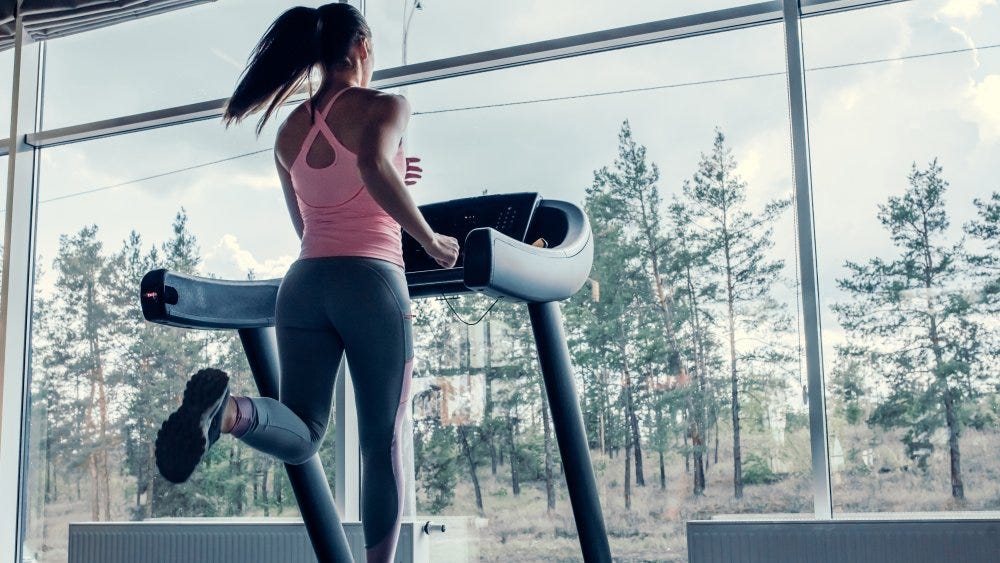Back in middle school, yes I am going that far back, I ran track and field for one season. Mostly because my older brother ran track in high school, so I thought I would give it a go. My tween self participated in the long jump, high jump, and 100 meter dash. In my neighborhood, I was the fasted. In my soccer league I was one of the fastest and most athletic. On my track and field team I was none of those…which was annoying. So my tween behind quit at the end of the season. “If I wasn't the best, what's the point,” I thought to myself. Ah, to be young…that is young in the brain.
A few things I remembered from this time period was that I needed epsom salt baths a lot from all the training. My quads, hamstrings, and legs overall were massive by the end of the season. I had a very hip tweenie haircut at the time with lots of bangs that would get in my eyes as I ran. Oh…and the intervals we had to do. I remember those the most since they were brutal.
What are intervals you ask…?
Well, this is something the whole team had to do at that time, no matter the discipline. So, to get descriptive here, track and field athletes run on a multilane track in a counterclockwise direction. The innermost lane measures 400 meters exactly. Each straight bit of track is 100 meters in length. So two 100 meter straights, and two 100 meter (inner most) arcs.
When our couch told us to do intervals, we had to jog 300 meters of the track. This would be one of the straights, and both arcs. The remaining straight was to be sprinted. So jog 75% of the track, and sprint 25% over and over again. For several laps in a row. With your coach on the loud horn to keep up the pace. No lollygagin' on the jog, and max effort on the sprints.
Passing someone on a sprint was an awesome feeling. Being passed was demoralizing. My goal was to finish without being shouted at by my coaches, and to not be passed on my sprints.
But why did our coaches ask us to do these…?
My guess is that starting a sprint from a jog is more taxing on your body than starting from a dead stop, since the jog has already sapped a lot of glycogen stores from your muscles. To get further technical, your body will learn how to efficiently switch from using your slow twitch muscle fibers (jogging) to those fast twitch muscle fibers (sprinting).
From a racing perspective, these won't do much for your start from a dead stop, more so on your ability to accelerate in the middle of a sprint to achieve a higher top speed. Furthermore, it kind of conditions your mind and body to a very stressful event. And the better conditioned you are, the better your performance during a race that counts.
So how do intervals help the average non-athlete who is into, or just about to get into fitness…?
Well it does add another dimension to your cardio routine. Normally when people think of cardio, they think of walking or jogging on a treadmill at a steady speed. Getting up to a very brisk walking or jogging pace from a stand still requires a lot of energy from your body. However, once your top speed is reached, a fraction of energy is needed to maintain that pace. If burning fat is your goal, this steady state cardio thing is not the business. Nor is it the business if sportive performance is your goal. Most treadmills, stationary bicycles, and elliptical machines have an interval option. Choosing this function on the machine itself allows you to set up an interval cycle. Once set, the machine will automatically increase/decrease the pace or resistance without your need to intervene.
Personally, I like to cap off a weight training session with a 7-10 minute interval session. Slow, then fast, then slow, then fast. It forces my body to use more energy than if I was just to cruise along at a slow pace. It conditions my body and mind to switch up the pace in life at the drop of a hat. It helps keep my legs beneath me so then when I play sports I am light on my feet. Which makes me feel like I used too when playing as a kid. And it is less monotonous on my mind.
For those that are looking to maximize fat burning, and minimize muscle mass loss from cardio…these are a must. For you will be effectively mixing aerobic with anaerobic exercise. Which is another topic for another post.
Yay intervals…! Go intervals…! Do intervals…!
To help grow this newsletter please Like, Comment, Share, and Subscribe.
To help support this newsletter, consider becoming a Paid Subscriber.





